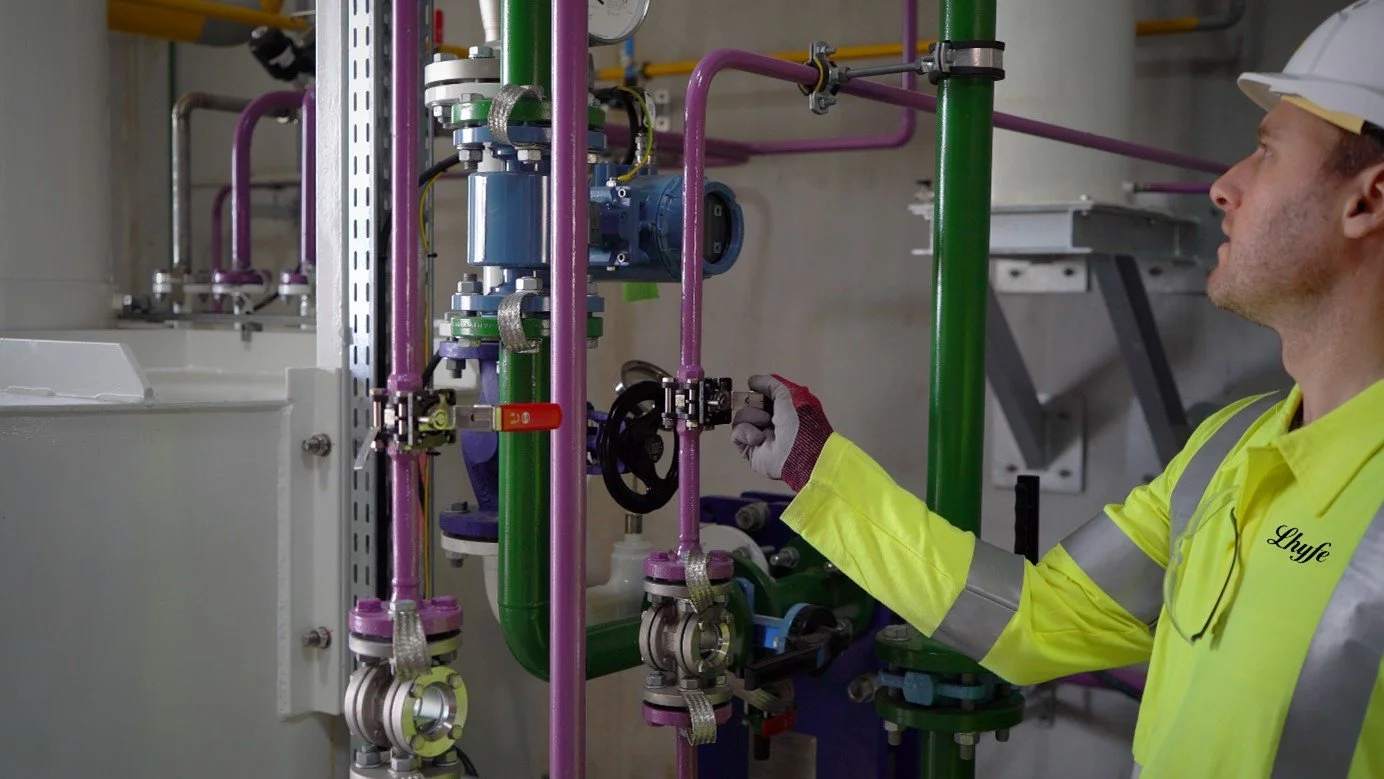Lhyfe completes first combustion tests using green hydrogen as a replacement for natural gas
Lhyfe, one of the world pioneers in the production of green and renewable hydrogen for the decarbonisation of mobility and industry, has taken a significant step forward with the first tests of green hydrogen combustion as a replacement for fossil gas combustion.
This first experiment, successfully deployed in the ceramics sector, can now be replicated in other sectors using combustion, thanks to the mixing kit developed by Lhyfe.
The combustion of fossil fuels – mainly natural gas – is used in many industries to reach the high temperatures required by their processes (between 400°C and 1550°C). Like many energy-intensive sectors, these industries are now seeking to reduce their carbon intensity by replacing natural gas with green hydrogen. Burning green hydrogen emits no CO2, unlike burning natural gas.
Image ©Lhyfe
Lhyfe is a pioneer in its sector which began producing renewable green hydrogen in 2021. It is regularly asked to take part in pioneering hydrogen experiments and has thus developed the ability to adapt to all its customers’ decarbonisation needs.
These combustion tests – the first carried out by Lhyfe – involved mixing combustion gases and gradually increasing the proportion of green hydrogen as a replacement for natural gas. To achieve this, Lhyfe has developed a “mixing kit” that gradually increases the proportion of green hydrogen in the mixture from zero to 100 per cent.
The tests were carried out successfully, requiring only the burners to be changed.
This system can now be deployed in many industries that use high-temperature gas combustion (at between 400°C and 1550°C).
Frédéric Naudi, Industry Key Account Manager at Lhyfe said: “These combustion tests, using up to 100% green hydrogen, represent an important milestone for Lhyfe, which is thus supporting the first trials to decarbonise manufacturing processes in an industry that consumes a lot of fossil gas. We can now deploy this system in many industries that burn fossil fuels. In this way, we continue our mission to decarbonise as of today, as well as that of supporting manufacturers in their decarbonisation experiments.”
Franz Bechtold, Lhyfe Sales Director for Spain added: “For some industries, it’s simply a matter of replacing grey hydrogen with green hydrogen, but for others – such as ceramics – the combustion process needs to be modified to replace natural gas with green hydrogen. This requires some adjustments.
“We are delighted to have been chosen by our partner to carry out this operation. The equipment we’ve developed for this project will be very useful for carrying out combustion tests with other industrial players and in other sectors looking to decarbonise.”
For more information, visit www.lhyfe.com.

